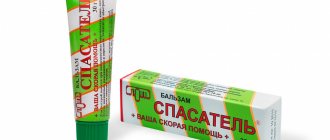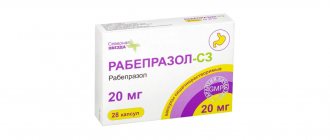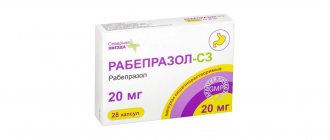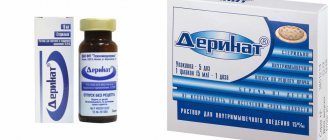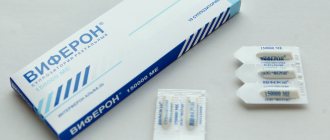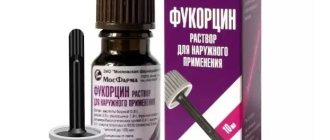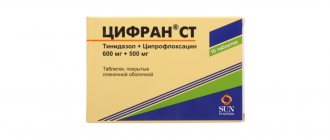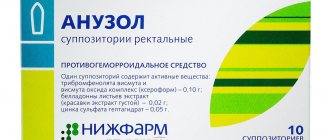Scabies - symptoms and treatment
The main subjective symptom of scabies is severe itching, which often occurs in the evening and at night.
Incubation period: if a person becomes ill with scabies for the first time, itching occurs after 1-2 weeks, with repeated infection - every other day.
Skin rashes (scabies, papules and vesicles) appear due to the activity of the mite. Later, an allergy to the products of its vital activity occurs, as a result of which other symptoms are added: small scratches and hemorrhagic (bloody) crusts.
The main clinical symptom is scabies. It has the appearance of a rising straight or curved line of whitish-grayish or dirty gray color, the length of which is 5-7 mm. They are often found on the wrists, feet and male genitals. Scabies in the area of the feet are usually found in people who have been suffering from scabies for a long time, as well as during the initial penetration of a female mite into the epidermis of the soles, which often occurs after visiting baths and showers that an infected person had previously visited.[2][3][6 ]
The clinical picture of scabies is dominated by papules (nodules) and vesicles (bubbles). Young females and males (immature forms of the parasite) are found in papules and vesicles in 1/3 of cases. Papules with mites are usually small in size (up to 2 mm), they are located in the area of the hair follicles. Vesicles are often small (up to 3 mm) and located in isolation; an inflammatory reaction may be absent. They are found mainly in the interdigital spaces of the hands, sometimes on the wrists and feet.
Rashes in the form of scratches and hemorrhagic crusts appear secondarily when scratching the skin. If the skin is damaged by scratching, microflora may join, causing suppuration, then pustules, pustules, and serous-purulent crusts appear.
The rashes are localized mainly on the torso and limbs, rarely on the face and interscapular area. Most often they are found on the hands, sometimes on the wrists, feet, scrotum, penis in men and in the area of the nipple areola in women. Scratching, pustules and bloody crusts usually occur in the area of the elbows, intergluteal fold and sacrum.[1][2][6]
Diagnostic signs of scabies include:
- Gorchakov's symptom - hemorrhagic crusts in the area of the elbows and their circumference;
- Ardi's symptom - pustules and purulent crusts on the elbows and in their circumference;
- Sézary's symptom is an itch, represented by a slight elevation in the form of a strip, which can be detected by palpation;
- Michaelis symptom - hemorrhagic crusts and impetiginous rashes in the intergluteal fold with transition to the sacrum.
Reasons for appearance
The lesions are caused by the parasite Sarcoptes scabiei. Any living creature that has been infected can carry it. And the more lesions on the patient’s body, the higher the risk that he can infect someone.
what does a scabies mite look like?
Infection is carried out by females and larvae. The female lives in the skin. During the daytime it is inactive, but in the evening it actively gnaws through passages, reproduces, feeds and secretes waste products. Consequently, the greatest risk of infection appears precisely in the evening and night time, when the tick is more active.
Everyone who comes into contact with the infected person is at risk. For example:
- family member
- roommate
- roommate
However, you can also become infected through indirect contact. For example in the following places:
- bathhouse
- public shower
- crowded places
Interesting. Outside a living organism, the female can live up to 3 days.
The disease spreads quickly due to the fact that the female lays eggs from which larvae hatch. After maturation, the latter crawl out to mate. The male dies and the female burrows back into human skin to continue the cycle of reproduction and spread.
Side effects
If you follow the rules described in the instructions, no side effects are observed. There are also no reported cases of overdose. However, in some situations, allergy-related side effects are possible:
- redness;
- hives;
- itching;
- burning of the skin.
When such symptoms occur, symptomatic treatment is indicated. If allergic reactions are accompanied by complications, you must stop the course and consult a doctor. A change in therapy may be needed.
It should also be noted that sulfur has a fairly high toxic effect. Inhalation of the ointment is unacceptable - it is necessary to protect the lungs and nasopharynx. If during treatment you discover other side effects that are not listed in the description, you should consult a doctor.
Complications
Scabies must be treated from the first day the disease is detected. Otherwise, it can cause many unpleasant complications, which will be very difficult to get rid of. For example, pyoderma, or purulent skin lesions, as well as dermatitis, are very common. It is possible to develop microbial eczema and urticaria, but this is not very common.
With prolonged course without treatment, the likelihood of developing deep folliculitis and impetigo increases. Then you will have to contact a surgeon for treatment. As purulent lesions spread, the lymph nodes may become enlarged, the temperature may rise, and the skin may become sore.
“Sulfur ointment”: description
The drug is an ointment that contains the active substance – sulfur in precipitated form. Also contains petrolatum base, water and emulsifier. It is packaged in 25 g jars. It should be stored in a cool place at a temperature of up to 15 degrees Celsius, or in the refrigerator. Avoid exposure to sunlight and keep away from children. The shelf life is 2 years from the date of production.
The ointment has a wide range of effects. It heals wounds, eliminates itching, relieves skin irritation, and disinfects the surface. Destroys bacteria, fungi, and parasites. It is used for various diseases and infectious lesions of the skin.
How to get rid of scabies mites in the house
Scabies mites die when exposed to high temperatures. To kill scabies mites on bedding, clothing and towels:
- Wash items in a washing machine with hot water and dry them in the dryer on a hot cycle for at least 20 minutes;
- If items cannot be washed, then pack them in a sealed plastic bag. Keep the package closed for 5-7 days.
If the person living with you has scabies, then wash all the things that anyone in the house has worn in the last 4-5 days. This will help you and the people living with you not to get scabies from dirty clothes.
People with crustose scabies are highly contagious. It is very important to thoroughly vacuum the furniture and carpets in the room where the infected person was. At the same time, there is no need to disinfect residential premises by fumigation.
to come back to the beginning
Indications and contraindications
The main indications for use of the drug are:
- scabies;
- psoriasis (as an additional remedy);
- lichen;
- demodicosis;
- fungal infection of the feet and nails;
- The drug also helps in the treatment of seborrheic dematitis.
The product is practically harmless, so it can be used not only by adults, but also by children from 2 years of age. However, there are several contraindications:
- all stages of pregnancy;
- feeding period;
- increased sensitivity of the body to sulfur or other components;
- children under 2 years old.
Diagnostics
To determine the clinical picture, you need to do the following:
- Explain your symptoms to your doctor in detail. For example, itching only bothers you at certain times
- get tested
- examine the patient's body
- determine the source of infection
- find traces of the tick itself or its larvae
Typically, the disease is determined by the following criteria:
- purulent blisters
- dry crust
- redness on the buttocks
- scabies (the most important criterion)
To determine the itch, the lesion can be stained with iodine, oil containing minerals, or simply pressed on the epidermis with a glass slide. This will block blood from reaching the affected area and allow you to clearly see the affected area. It can also be detected using dermatoscopy (during the procedure the tick itself is detected).
Ticks can be detected using lactic acid. One drop (40%) should be applied to any lesion and wait 5 minutes. The loosened skin can then be scraped off with a sharp spoon until capillary bleeding appears. The resulting epidermis must be applied to a glass slide and looked at under a microscope. The method will allow you to identify most parasites and the products of their activity.
How to treat
For proper treatment, specific therapy must be carried out to confirm scabies. If the doctor was unable to identify the mite and scabies, a trial treatment will be prescribed. In addition, preventive treatment is prescribed to all family members and people in contact with the patient.
The doctor will prescribe medications that kill ticks. Most often they are:
- aerosols
- ointments
- creams
- suspensions
- emulsions
The prescribed drugs will be based on the following substances:
- benzyl benzoate
- permitrina
- sulfur
- piperonyl butoxide
- esbiola
Sometimes treatment includes washing with soap or treating the skin with emollient ointments before using the drug.
Only a doctor can prescribe a medicine and treatment method. It is based on the following criteria:
- clinical picture
- complications
- person's age
- pregnancy
Self-medication can cause complications, apathetic forms of infection or a protracted course of the disease.
Self-medication is excluded!
Various drugs are used to treat scabies. But in any case, only a specialist knows how to treat scabies. It is unacceptable to independently choose medications that are freely sold in pharmacies.
There are a number of drugs that can be used in combination with each other. Self-treatment of scabies can cause serious complications and the development of other skin infectious and allergic diseases. To prevent dermatitis caused by drugs and eliminate skin itching, hyposesitizing agents and antihistamines are prescribed.
After the course of treatment, skin itching may still bother the patient for some time, but this is just an allergic reaction, which soon goes away without a trace.
3 days after the end of treatment, medical monitoring of the results is carried out, and is repeated every 10 days for one and a half months.
Treatment of scabies by professional dermatologists guarantees a quick and effective cure at any stage of the disease. A preliminary diagnosis is carried out, and based on the results of the study, a specific treatment course is prescribed.
